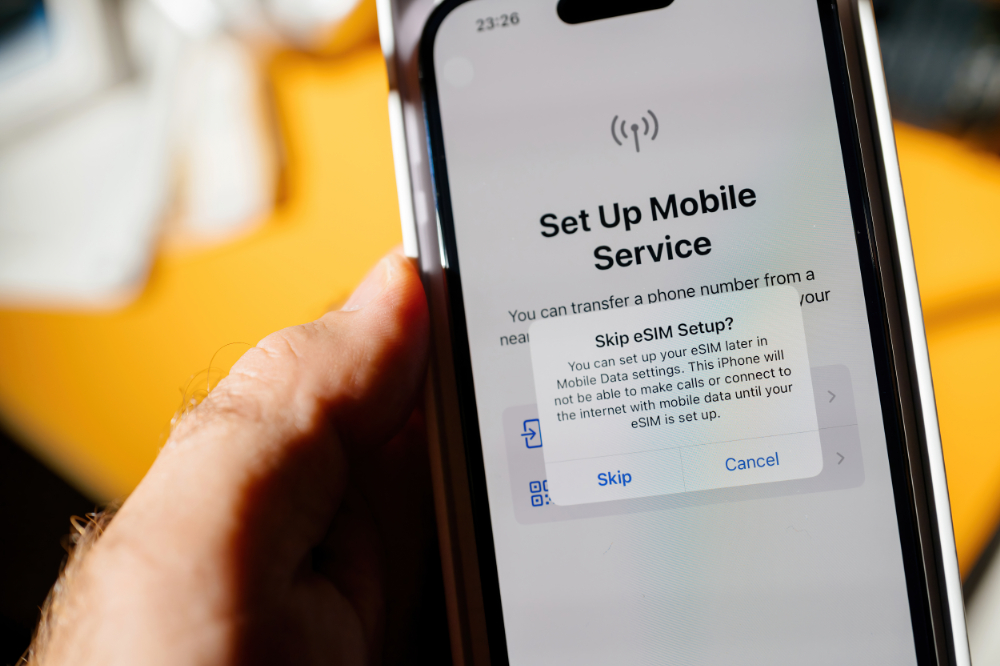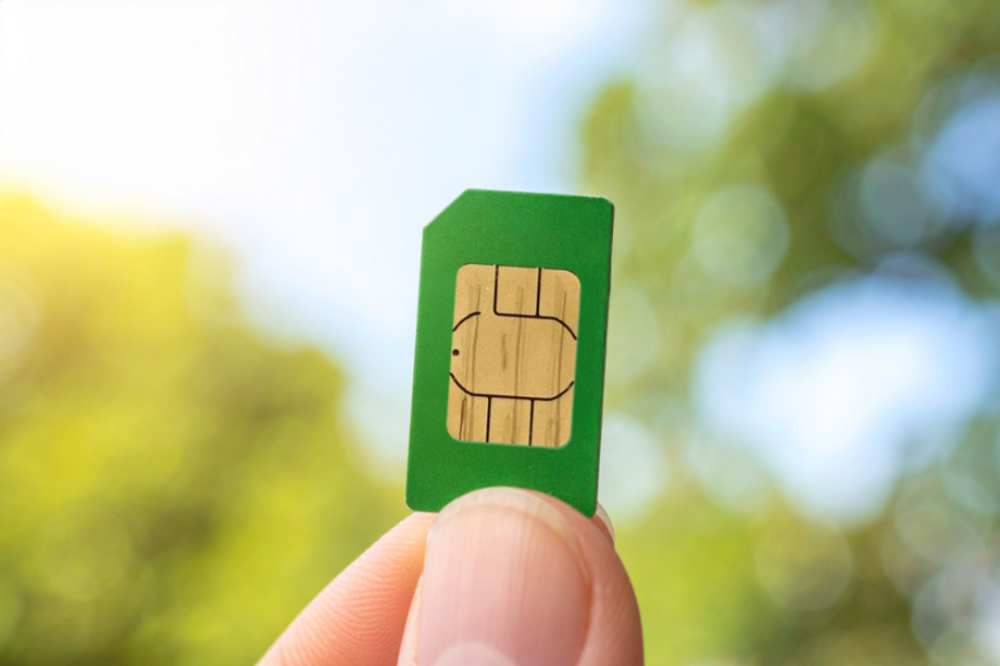
eSIM vs Pocket WiFi Japan: Which Is Best for Travelers?
In Japan, seamless Internet access can significantly enhance your travel experience.
Staying connected is essential, whether you need to check maps or train schedules, use translation apps, or even order food at a local soba restaurant. However, extra planning is required for reliable Internet access.
Travelers have a variety of options for staying online: among them, eSIMs and pocket WiFi stand out. While public WiFi is available at some hotels, cafés, and train stations, it can be unreliable, slow, or require registration processes that are not always tourist-friendly; international roaming, on the other hand, is likely to be the most expensive option.
Many visitors choose between eSIMs and pocket WiFi to ensure a stable connection throughout their trip.
Choosing the right option depends on several factors.
In this guide, we’ll explore eSIMs and pocket WiFi in detail, comparing their advantages and limitations so you can make the best choice for your Japan adventure.
eSIM for Japan: A Modern, Seamless Solution

Staying connected in Japan has never been easier. For many travelers, eSIM technology offers a hassle-free way to access the Internet without dealing with physical SIM cards or extra devices.
What is an eSIM?
eSIM, or embedded SIM, is a digital alternative to traditional physical SIM cards. Instead of inserting a SIM card into your phone, an eSIM is built directly into your device and can be activated remotely by scanning a QR code or installing a mobile carrier profile.
Travelers can switch to a local Japanese carrier without needing a physical SIM card, making the process much more convenient.Typical prices of eSIMs in Japan vary depending on the provider, data allowance, and duration. With NINJA WiFi services, prices range from:
- ●5GB for 5 days: 3,102 yen
- ●10GB for 15 days: 5,104 yen
- ●100GB for 31 days: 18,403 yen
Prices fluctuate based on the carrier and any promotional offers. Most eSIM plans have a fair usage policy that may reduce speeds after reaching a daily cap, but you won’t usually be restricted from accessing the Internet.
With 28 different plans available, NINJA WiFi offers flexible options tailored to various travel needs, from short-term stays to extended visits, and ensures you get the best balance of cost and connectivity.
Devices Compatible with eSIMs
Many modern smartphones support eSIM technology, including iPhones from the XS series onward (iPhone XS, XR, 11, 12, 13, 14, and newer models).
Android devices, such as Google Pixel (Pixel 3 and later) and Samsung Galaxy models (Galaxy S20 and newer), also offer eSIM compatibility. However, compatibility can vary by region and carrier, so checking if your specific model supports eSIM activation in Japan is essential before purchasing a plan.
Pros and Cons of eSIMs for Japan Travel
The advantages of getting an eSIM for a trip to Japan include:
- ●No physical SIM required: Eliminates the hassle of inserting or swapping SIM cards.
- ●Easy activation: It can be set up before arrival in Japan.
- ●No extra device to carry: It uses your phone’s built-in connectivity.
- ●Ideal for short trips: Convenient for travelers staying a few days or a week.
-
On the other hand, disadvantages include:
- ●Device compatibility limitations: Not all phones support eSIM activation.
- ●Data-only plans: Many eSIMs do not include voice calls or SMS, requiring alternatives like WhatsApp or Skype for calls.
- ●Requires initial setup: An Internet connection is required for activation, which may be an issue if it is not done before arrival.
-
Pocket WiFi in Japan: Reliable and Versatile Connectivity

Pocket WiFi is another popular solution for staying connected in Japan. It offers stable and reliable Internet for various devices without the need for SIM card compatibility. Here’s what you need to know about this option.
What is Pocket WiFi?
Pocket WiFi is a portable wireless router that provides Internet access by connecting to Japan’s mobile networks.
It creates a personal WiFi hotspot that can be used with any WiFi-enabled device, including smartphones, tablets, and laptops. A Pocket WiFi makes it an excellent option for travelers who need connectivity across multiple devices.
Rental prices vary depending on data allowances and rental duration. NINJA WiFi offers a variety of pocket WiFi plans:
- ●Unlimited Plan (SoftBank) 1GB per day: 440 yen per day
- ●Unlimited Plan (Softbank) 5GB per day: 1,100 yen per day
- ●5G Unlimited Plan: 2,200 yen per day
With these flexible options, travelers can choose a plan that best suits their Internet needs, whether they require minimal data for occasional browsing or a high-speed connection for seamless streaming, work, and navigation throughout Japan.Pros and Cons of Pocket WiFi for Japan Travel
Pros of renting pocket WiFi in Japan include:
Pros of renting pocket WiFi in Japan include:
- ●Wide coverage and stable connection: It works well even in rural areas with limited eSIM coverage.
- ●Easy rental process: Pocket WiFi is available for pickup at major airports and rental counters across Japan. You should book online ahead of time to have more options. NINJA WiFi allows you to pick up and return your device at ten different airports nationwide.
- ●Supports multiple devices: Ideal for groups sharing Internet access.
- ●No device compatibility concerns: It works with any WiFi-enabled device, regardless of carrier restrictions.
Meanwhile, the disadvantages of pocket WiFi for a trip to Japan include:
- ●Requires carrying an extra device: Travelers must always keep the router with them.
- ●Requires staying together: Group members must stay close to the WiFi router to remain connected.
- ●Needs regular charging: Most devices last 8–12 hours, requiring occasional recharging throughout the day.
- ●Rental fees: Costs can add up over extended stays, though sharing among multiple users makes it more affordable.
eSIM vs Pocket WiFi Japan: Which One Should You Choose?

Choosing between eSIM and pocket WiFi depends on your travel needs and priorities.
When deciding between both for your Japan trip, it’s essential to consider how each option fits your travel style, connectivity needs, and convenience preferences.
Key Differences Between eSIM and Pocket WiFi
Below is a table summarizing the main differences between eSIM and pocket WiFi:
|
Feature |
eSIM |
Pocket WiFi |
|
Device Required: |
No |
Yes (router) |
|
Setup Process: |
Digital, quick |
Physical pickup |
|
Coverage: |
Dependent on carrier |
Broad, stable |
|
Supports Multiple Devices: |
No |
Yes |
|
Data Limits: |
Varies per plan |
Unlimited or daily cap |
|
Sharing Cost: |
Not shareable |
Shareable with family/friends |
eSIM or Pocket WiFi: What’s Best for Your Japan Trip?
Now that we know what sets eSIM and pocket WiFi apart, let’s see which option is best for you, depending on what type of traveler you are.
Best for Solo Travelers and Minimalists
If you prefer a streamlined, no-fuss experience, eSIM is an excellent choice. It eliminates the need for extra devices and is ideal for travelers who want simplicity.
eSIM works best for those with shorter stays or lighter Internet needs. For instance, if you’re just using your phone for occasional map checking or social media updates, eSIM will meet those needs without additional equipment.
Best for Families, Groups, and Business Travelers
For larger groups or those needing to stay connected for work, pocket WiFi is the way to go. It allows multiple devices to connect simultaneously, which is perfect for families, groups of friends, or business teams who need reliable Internet access across different devices.
Pocket WiFi is particularly suited for extended stays or travelers who need stable, unlimited Internet for activities like streaming, video calls, or uploading files. NINJA WiFi offers convenient pickup and return locations at major airports and city locations, making it especially easy for international visitors to connect without hassle.
Additionally, with NINJA WiFi, you don’t have to worry about returning the device to the pickup location, which adds further flexibility to your travel plans.
Best for High-Speed, Reliable Internet Needs
For travelers who require consistent, high-speed Internet for tasks like video streaming, work, or making online calls, pocket WiFi is often the better option. It provides a strong and stable connection, even in rural areas or places where public WiFi may not reach.
With its unlimited data plans, NINJA WiFi ensures you will remain connected even after exceeding your daily data limit, so you can continue using essential apps like Maps and text messaging without interruption.
Ultimately, the best choice for your trip will depend on your personal preferences and how you plan to use the Internet during your time in Japan.
Conclusion
Choosing between eSIM and pocket WiFi depends on your travel style and connectivity needs. eSIM is ideal for solo travelers or short stays, offering a smooth, device-free experience. Pocket WiFi, however, is perfect for groups, families, or business travelers who need reliable, multi-device connectivity for longer trips.
The key is to select a solution that aligns with your itinerary and data requirements. NINJA WiFi provides a stress-free option for easy airport pickup, flexible returns, and cost-effective plans, ensuring you stay connected throughout your trip.
Make your Japan adventure hassle-free with NINJA WiFi—reliable, affordable, and always within reach.








